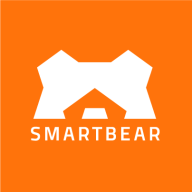

Selenium HQ and CrossBrowserTesting are competing products in web application testing. CrossBrowserTesting seems to have the upper hand with advanced compatibility testing and integrated services.
Features: Selenium HQ offers a flexible framework with support for multiple programming languages, diverse testing tools integration, and open-source benefits. CrossBrowserTesting provides extensive cross-browser testing options, utilizing a cloud-based infrastructure and a vast selection of browsers.
Room for Improvement: Selenium HQ can improve its user-friendliness, simplify remote test executions, and enhance integration with cloud services. CrossBrowserTesting could offer more customizability, expand its browser and device support, and improve the efficiency of its record and replay functions.
Ease of Deployment and Customer Service: Selenium HQ requires manual setup and has a vibrant community for support, making it more challenging for newcomers. CrossBrowserTesting provides user-friendly cloud deployment and dedicated customer support, easing the onboarding process.
Pricing and ROI: Selenium HQ, being open-source, has no setup costs, promoting a good ROI for experienced teams. CrossBrowserTesting involves subscription fees but offers quick setup and extensive testing capabilities, providing faster ROI for immediate testing needs.

CrossBrowserTesting is a cloud testing platform that gives instant access to 1500+ different real desktop and mobile browsers for testers, developers, and designers.
Selenium HQ is an umbrella project that includes a number of tools and frameworks that allow for web browser automation. In particular, Selenium offers a framework for the W3C WebDriver specification, a platform- and language-neutral coding interface that works with all of the main web browsers.
Selenium is a toolset for automating web browsers that uses the best methods available to remotely control browser instances and simulate a user's interaction with the browser. It enables users to mimic typical end-user actions, such as typing text into forms, choosing options from drop-down menus, checking boxes, and clicking links in documents. Additionally, it offers a wide range of other controls, including mouse movement, arbitrary JavaScript execution, and much more.
Although Selenium HQ is generally used for front-end website testing, it is also a browser user agent library. The interfaces are universal in their use, which enables composition with other libraries to serve your purpose.
The source code for Selenium is accessible under the Apache 2.0 license. The project is made possible by volunteers who have kindly committed hundreds of hours to the development and maintenance of the code.
Selenium HQ Tools
These three main Selenium HQ tools have powerful capabilities:
Reviews from Real Users
Selenium HQ stands out among its competitors for a number of reasons. Two major ones are its driver interface and its speed. PeerSpot users take note of the advantages of these features in their reviews:
Avijit B., an automation tester at a tech services company, writes of the solution, “The driver interface is really useful. When we implement the Selenium driver interface, we can easily navigate through all of the pages and sections of an app, including performing things like clicking, putting through SendKeys, scrolling down, tagging, and all the other actions we need to test for in an application.”
Another PeerSpot reviewer, a software engineer at a financial services firm, notes, “Selenium is the fastest tool compared to other competitors. It can run on any language, like Java, Python, C++, and .NET. So we can test any application on Selenium, whether it's mobile or desktop."
We monitor all Functional Testing Tools reviews to prevent fraudulent reviews and keep review quality high. We do not post reviews by company employees or direct competitors. We validate each review for authenticity via cross-reference with LinkedIn, and personal follow-up with the reviewer when necessary.